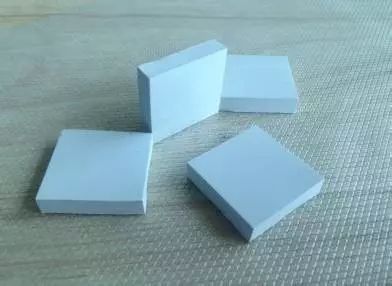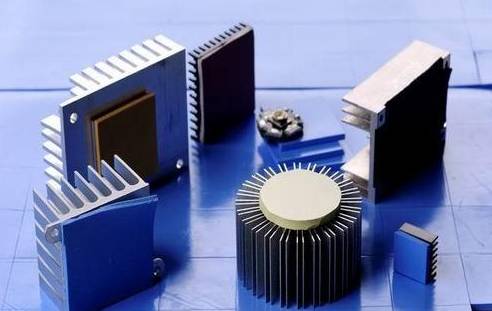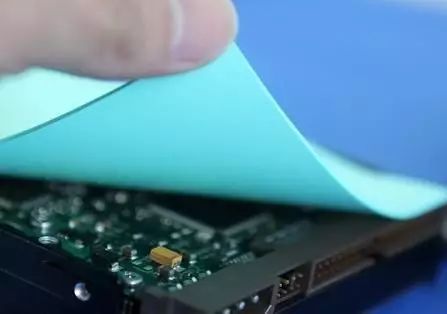

Hotline:0755-22277778
Tel:0755-22277778
Mobile:13826586185(Mr.Duan)
Fax:0755-22277776
E-mail:duanlian@xianjinyuan.cn
Thermal conductive silicone sheetIt is a thermal conductive medium material synthesized through special processes using silicone as the substrate and various auxiliary materials such as metal oxides. In the industry, it is also known as thermal conductive silicone pad, thermal conductive silicone film, soft thermal conductive pad, thermal conductive silicone gasket, etc. It is specially designed and produced for the use of gaps to transfer heat. It can fill gaps, complete the heat transfer between heating and cooling parts, and also play insulation, shock absorption, sealing and other roles. It can meet the design requirements of equipment miniaturization and ultra-thin design. It is highly technical and practical, and has a wide range of thickness applications. It is an excellent thermal conductive filling material.

Thermal conductive silicone sheet
The production process of thermal conductive silicone sheets mainly includes the following steps: raw material preparation → plasticization and mixing → molding and vulcanization → trimming and cutting → inspection, etc. Below is a brief introduction to the production process of thermal conductive silicon film:
1. Raw material preparation
The thermal conductivity of ordinary silicone gel is usually only about 0.2W/m · K. However, mixing thermal conductive fillers in ordinary silicone can improve its thermal conductivity. Common thermal conductive fillers include metal oxides (such as Al2O3, MgO, BeO, etc.) and metal nitrides (such as SiN, AlN, BN, etc.). The thermal conductivity of fillers is not only related to the material itself, but also closely related to the particle size distribution, morphology, interface contact, and degree of binding within the molecules of the thermal conductive fillers. Generally speaking, fibrous or foil shaped thermal conductive fillers have better thermal conductivity.
2. Plastering and mixing
Plastering and mixing are processes in the processing of silicone gel, which refer to the use of mechanical or chemical methods to reduce the molecular weight and viscosity of raw rubber to improve its plasticity and obtain appropriate flowability to meet the needs of further processing in mixing and molding. The raw materials for making thermal conductive silicon film are generally destroyed by mechanical high-speed stirring. After color matching and mixing, the sheets are transformed from milky white silicone to various colors.
3. Molding vulcanization
If you want to make a soft, elastic, and stretch resistant thermal conductive silicone film, you need to use organic silicone that has undergone secondary vulcanization. Sulfurization can actually be called curing. After the first stage of heating and forming, the cross-linking density of liquid thermal conductive silicone is insufficient. Further vulcanization reaction is required to increase the tensile strength, resilience, hardness, swelling degree, density, and thermal stability of the thermal conductive silicone film, which are significantly improved compared to one-time vulcanization. If secondary vulcanization is not carried out, the performance of the produced thermal conductive silicone sheet may be affected to some extent, and better performance products may not be obtained. The parameters of the product after primary vulcanization are not exactly the same as those of secondary vulcanization, which is also related to the actual operation process and steps.
4. Trimming and cutting
After high-temperature treatmentThermal conductive silicone sheetIt needs to be left for a period of time to cool naturally before cutting to different sizes and specifications, and other rapid cooling methods cannot be used. Otherwise, it will directly affect the product performance of the thermal conductive silicone pad.
5. Finished product testing
The main items that need to be tested for finished products include thermal conductivity, temperature resistance range, volume resistivity, voltage resistance, flame retardancy, tensile strength, hardness, thickness, etc.
Advantages of Thermal Conductive Silicone Film
1. The material is relatively soft, with good compression performance, good thermal insulation performance, and a wide range of adjustable thickness, suitable for filling cavities. It has natural viscosity on both sides and strong operability and maintainability;
2. The main purpose of using thermal conductive silicone film is to reduce the contact thermal resistance between the surface of the heat source and the contact surface of the heat sink component. Thermal conductive silicone film can effectively fill the gap between the contact surfaces;
3. Due to the fact that air is a poor conductor of heat, it can seriously hinder the transfer of heat between contact surfaces. However, installing a thermal conductive silicone sheet between the heat source and the heat sink can squeeze air out of the contact surface;
4. With the addition of thermal conductive silicon film, the contact surface between the heat source and the heat sink can be better and fully contacted, truly achieving face-to-face contact The reaction at temperature can achieve the smallest possible temperature difference;
5. The thermal conductivity of thermal conductive silicone film is adjustable, and its thermal stability is also better;
6. The process tolerance of thermal conductive silicone sheets in the structure is bridged, reducing the process tolerance requirements of heat sinks and heat dissipation structural components;
7. Thermal conductive silicone sheets have insulation properties (this feature requires the addition of suitable materials during production);
8. Thermal conductive silicone sheet has the effect of shock absorption and sound absorption;
9. Thermal conductive silicone sheets have the convenience of installation, testing, and reusability.
Disadvantages of Thermal Conductive Silicone Film
Relative thermal conductivity silicone grease,Thermal conductive silicone sheetThere are the following drawbacks:
1. Although the thermal conductivity is higher than that of thermal grease, the thermal resistance is also higher than that of thermal silicone;
2. Thermal conductive silicon film with a thickness of less than 0.5mm has a complex process and relatively high thermal resistance;
3. Thermal conductive silicone grease has a wider temperature resistance range, with thermal conductive silicone grease ranging from -60 ℃ to 300 ℃ and thermal conductive silicone sheet ranging from -50 ℃ to 220 ℃;
4. Price: Thermal conductive silicone grease is widely used and has a relatively low price. Thermal conductive silicone sheets are mostly used in thin, small, and precise electronic products such as laptops, and have a slightly higher price.
Application fields of thermal conductive silicone film
◆ Used in the LED industry
Thermal conductive silicone film used between aluminum substrate and heat sink
Thermal conductive silicone film is used between aluminum substrate and shell
◆ Power industry
Thermal conduction between MOS tubes, transformers (or capacitors/PFC inductors) and heat sinks or enclosures
◆ Communication industry
Thermal conduction and heat dissipation between the motherboard IC and the heat sink or casing of the product
Thermal conduction and heat dissipation between the DC-DC IC of the set-top box and the casing
Application in the automotive electronics industry
Thermal conductive silicone sheets can be used for applications in the automotive electronics industry, such as xenon lamp ballasts, audio systems, and car series products
Application of PDP/LED TV
Thermal conductivity between amplifier IC, image decoder IC, and heat sink (casing)
◆ Home appliance industry
Microwave oven/air conditioner (between fan motor power IC and housing)/induction cooker (between thermistor and heat sink)
Selection of Thermal Conductive Silicone Film
◆ Selection of thermal conductivity coefficient
The selection of thermal conductivity mainly depends on the power consumption of the heat source and the heat dissipation capacity of the radiator or heat dissipation structure. Generally, chips with low temperature specifications, sensitivity to temperature, or high heat flux density (generally greater than 0.6w/cm3 requires heat dissipation treatment, and when the surface is less than 0.04w/cm2, only natural convection treatment is needed) require heat dissipation treatment for these chips or heat sources, and thermal conductive silicone sheets with high thermal conductivity should be selected as much as possible.

The consumer electronics industry generally does not allow the junction temperature of chips to exceed 85 degrees, and it is recommended to control the surface temperature of chips to be less than 75 degrees during high-temperature testing. The components of the entire board are mostly commercial grade components, so it is recommended that the internal temperature of the system should not exceed 50 degrees at room temperature. The recommended temperature for the first appearance surface or the surface that the end customer can come into contact with should be below 45 degrees Celsius at room temperature. Choosing a thermal conductive silicone sheet with a higher thermal conductivity can meet design requirements and retain some design margin.
Note: Heat flux density: defined as the amount of heat that passes through a cross-section per unit area (1 square meter) per unit time (1 second) The junction temperature is usually higher than the shell temperature and device surface temperature. The junction temperature can measure the time and thermal resistance required for heat dissipation from the semiconductor wafer to the packaging device casing.
Factors affecting the thermal conductivity of silicone gel
1. Types and characteristics of polymer matrix materials
The thermal conductivity of the matrix material is extremely high, and the better the dispersion of the filler in the matrix and the better the bonding between the matrix and the filler, the better the thermal conductivity of the thermal conductive composite material.
2. Types of fillers
The higher the thermal conductivity of the filler, the better the thermal conductivity of the thermal conductive composite material.
3. The shape of the filler
Generally speaking, the order in which thermal conductivity pathways are easily formed is whiskers>fibrous>sheet-like>granular. The easier the filler is to form a thermal conductivity pathway, the better the thermal conductivity performance.
4. Content of fillers
The distribution of fillers in polymers determines the thermal conductivity of composite materials. When the filler content is low, the thermal conductivity effect is not significant; When there is too much filler, the mechanical properties of the composite material will be greatly affected. When the filler content increases to a certain value, the interaction between fillers forms a network like or chain like thermal conductive network chain in the system. When the direction of the thermal conductive network chain is consistent with the direction of heat flow, the thermal conductivity is the best. Therefore, there exists a critical value for the amount of thermal conductive filler.
5. The bonding characteristics of the interface between filler and matrix material
The higher the degree of bonding between the filler and the matrix, the better the thermal conductivity. Choosing a suitable coupling agent for surface treatment of the filler can increase the thermal conductivity by 10% -20%.
Installation method of thermal conductive silicone film
1. Keep the end surface of the thermal conductive silicone film clean to prevent contamination of the thermal conductive silicone film. The self adhesion and sealing thermal conductivity of the contaminated thermal conductive silicone film will deteriorate.
2. When taking the thermal conductive silicone film, the larger area of the film should be grasped from the center, and the smaller area of the film is not required to be grasped, because the uneven force on the large area of the thermal conductive silicone film can cause deformation, affect subsequent operations, and even damage the silicone film.
3. Take the sheet with your left hand and tear off one side of the release protective film with your right hand. It is not allowed to tear off both sides of the protective film at the same time to reduce the number and area of direct contact with the thermal conductive silicone film, and to maintain the self-adhesive and thermal conductivity of the thermal conductive silicone film without damage.
4. Tear off one side of the protective film, facing towards the heat sink, and align the thermal conductive silicone film with the heat sink first. Slowly lower the thermal conductive silicone sheet. Be careful to avoid the formation of bubbles.
5. If bubbles are generated during operation, pull up one end of the silicone film and repeat the above steps, or gently wipe off the bubbles with a tool. The force should not be too strong to avoid damage to the thermal conductive silicone film.
6. Remove the protective film on the other side and place it in the radiator. The force of removing the last protective film should be small to avoid pulling or pulling up the thermal conductive silicone sheet.
7. After tightening or using a strong adhesive thermal conductive silicone film, apply a certain pressure to the heat sink and store it for a period of time to ensure that the thermal conductive silicone film is securely fixed.

In summary, the heat dissipation effect of thermal conductive silicone film is very good. During the installation process of thermal conductive silicone film, it is recommended to be careful and not be impatient, which may cause bubbles and damage to the thermal conductive silicone film. Otherwise, it will waste money and time.

Advanced Institute (Shenzhen) Technology Co., Ltd, © two thousand and twenty-onewww.avanzado.cn. All rights reservedGuangdong ICP No. 2021051947-1 © two thousand and twenty-onewww.xianjinyuan.cn. All rights reservedGuangdong ICP No. 2021051947-2